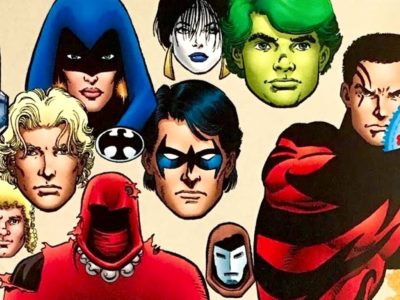
[ad_1]
In Miles Morales: Spider-Man #32, Marvel’s young web-slinger is informed that he can no longer legally use the iconic mantle of his predecessor.
WARNING: The following contains major spoilers for Miles Morales: Spider-Man #32, on sale now from Marvel Comics.
Ever since he first stepped into the Marvel Universe, Miles Morales has enthralled fans as one of the greatest heroes to carry the mantle of Spider-Man. Despite his young age and all the complicated relationships that come with the title, Miles hasn’t let anything keep him from carrying on what might be the most iconic legacy in all of Marvel history. Unfortunately, Miles Morales: Spider-Man #32 (by Saladin Ahmed, Christopher Allen, Guru-eFX, and VC’s Cory Petit) reveals that the young webslinger’s time using the heroic identity may soon be coming to an end, thanks to the efforts of the Beyond Corporation.
After Miles and his girlfriend Tiana Toomes, aka Starling, have just finished fighting the Taskmaster in their superhero identities, they are greeted by a flying limo bearing mysterious men in suits. Miles is then served with a cease-and-desist by the Beyond Corporation, who legally owns the rights to the name and likeness of “Spider-Man.”
In some ways, the legal dilemma Miles is facing in the comic book world is reflective of the real life battle that was waged by Marvel and Sony for years over the use of Spider-Man. It may not be a direct reference, of course, but the Spider-Man brand being so hotly contested is absolutely something that Marvel has had to contend with previously, and Miles must so so now.
As a theme, corporate sponsorship of comic book properties has been addressed in some other strange places. Take Captain Amazing, for example, who was featured in the 1999 film Mystery Men. Although the film was only loosely based on Bob Burden’s Flaming Carrot Comics, it embodied the satire of the source material. This includes Amazing having dozens of corporate sponsors, with their patches being worn on his costume like a living advertisement. Amazing was fine to sell out (and in a way, take control of) his brand, though we don’t expect “Spidey Beyond” to undertake the same business relationships.
Although it may be hard to imagine any respectable superhero going that route, some heroes have come remarkably close. Another example from the comics is 1993’s “Reign of the Supermen” event, which occurred after the “Death of Superman” and introduced Kon-El, a potential replacement for the Man of Steel. Like the Beyond Corporation, his sponsor secured the exclusive rights to everything pertaining to the “Superman” brand, relinquishing their hold only upon the return of the original.
The argument can reasonably be made that all of these occurrences are an allusion to how superheroes have become corporate entities over the past few decades, thanks to the boom of comic book adaptations on the silver screen, and all of the complex rights disputes that came as a result.
The interaction between Miles and the representatives of the Beyond Corporation is a good place to start when it comes to the discussion of who exactly owns these characters and how to handle them. In the comic book world, the answer to this question will undoubtedly hold serious ramifications for the young Spider-Man.
About The Author
[ad_2]





